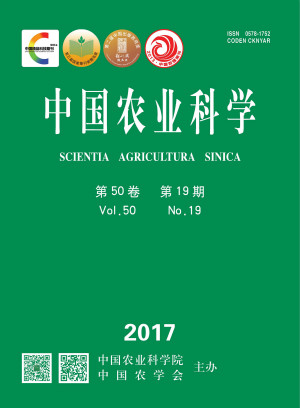-
The Fermentation Characteristics and Effects on Nitrogen Excretion Related Indicators of Different Fiber Diets Using an in vitro Method in Pigs
- ZHU LiYuan, LU QingPing, XIA Bing, LIU ZhengQun, SUN YongBo, ZHANG HongFu
-
Scientia Agricultura Sinica. 2017, 50(19):
3817-3827.
doi:10.3864/j.issn.0578-1752.2017.19.018
-
 Abstract
(
365 )
Abstract
(
365 )
 HTML
(
3 )
HTML
(
3 )
 PDF (431KB)
(
446
)
PDF (431KB)
(
446
)
 Save
Save
-
References |
Related Articles |
Metrics
【Objective】The present study was conducted to investigate and compare the fermentation characteristics and effects on nitrogen excretion related indicators of different fiber diets using an in vitro method in pigs. The study aimed to provide an experimental basis for the rational application of dietary fiber in pig production and for the preparation of diets to reduce nitrogen excretion. 【Method】Wheat fiber (WF), wheat bran fiber (WBF) and oat bran fiber (OBF) were purified from wheat, wheat bran and oat bran, respectively, using the enzyme-gravimetric method (AOAC Method 985.29). WF diet, WBF diet and OBF diet based on maize and soybean were formulated to contain 5% WF, WBF and OBF. The three fiber diets were undergone a stomach-small intestine digestion of pigs by simulative digestion system (SDS-II). A total of six growing pigs, which were in good health and had similar weight, were used to collect fresh feces. The mixed feces and culture solution were compounded in an appropriate proportion to prepare inocula which were quantitatively charged into fermentation flasks for simulating large intestine fermentation. After the stomach-small intestine digestion, the digestive products were pooled. 200 mg digestive products were added into a fermentation flask filled with 30 mL of inocula, placed in an incubator at (39±0.25)℃. The fermentation were stopped at 4, 12, 24, 36, 48 and 72 h of incubation. Then the fermentation residues and fermentation broth were collected, and the relevant indicators were determined.【Result】The results indicated that in the large intestine fermentation stage, there were significant differences in dry matter degradability during the in vitro fermentation (IVDMD) and total short-chain fatty acid (SCFA) concentration, pH, ammonia nitrogen (NH3-N) concentration and microbial protein (MCP) production in fermentation broth among the three fiber groups (P<0.05): (1) At 4 h and 12 h, OBF group had the highest IVDMD among the three groups (P<0.01), and no significant differences at other point in time(P>0.05). At 4 h, the IVDMD of OBF group was 18.32% and 15.21% higher than WF group and WBF group, respectively (P<0.01); at 12 h, OBF group was 14.87% and 10.06% higher than WF group and WBF group, respectively (P<0.01). (2) As for total SCFA concentration in fermentation broth, at 24 h and 36 h, OBF group was significantly higher than other groups (P<0.05); at 72 h, OBF group and WBF group were significantly higher than WF group (P<0.01); at 4 h and 12 h, OBF group had a higher trend than other groups (P=0.0599; P=0.0504). At 24 h, the total SCFA concentration of OBF group was 27.32% and 17.11% higher than WF group and WBF group, respectively (P<0.05); at 36 h, OBF group was 16.65% and 25.96% higher than WF group and WBF group, respectively (P<0.05). (3) As for pH in fermentation broth, at 4 h and 12 h, OBF group had the lowest values among the three groups (P<0.01); at 24 h, 36 h and 72 h, OBF group and WBF group were significantly lower than WF group (P<0.05). (4) As for NH3-N concentration in fermentation broth, OBF group was significantly lower than other groups at 24 h and 48 h (P<0.05) and had a lower trend at 12 h (P=0.0559). At 24 h, the NH3-N concentration of OBF group was 6.86% and 4.59% lower than WF group and WBF group, respectively (P<0.05); at 48 h, OBF group was 8.44% and 7.09% lower than WF group and WBF group, respectively (P<0.05). (5) As for MCP production in fermentation broth, OBF group had the highest value among the three groups at 4 h (P<0.05); at 12 h, 24 h and at 36 h, 48 h, respectively, OBF group was significantly higher than WF group and WBF group (P<0.05). At 4 h, the MCP production of OBF group was 69.85% and 82.25% higher than WF group and WBF group, respectively (P<0.05).【Conclusion】In conclusion, oat bran fiber significantly increased IVDMD, total SCFA concentration and MCP production in fermentation broth, and significantly lowered pH and NH3-N concentration in fermentation broth. Thus, compared to wheat fiber and wheat bran fiber, oat bran fiber had a good potential in promoting microorganism fermentation and reducing nitrogen excretion.









